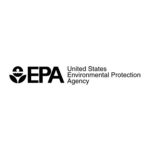QAP for Confidence
Scammers trading in fraudulent renewable fuel identification numbers stole millions. A new EPA rule is designed to make sure that doesn’t happen again.
In an effort to put a stop to trading in fraudulent RINs that came to light in spectacular criminal cases over the past few years, the
Environmental Protection Agency in July issued a rule designed to help verify the validity of the fuel credits.
The rule provides for a voluntary quality assurance program, which would vouch for the credibility of the fuel credits under the Renewable Fuel Standard.
‘We believe the EPA did a good job of strengthening the audit requirements in the rule and streamlining the QAP program, so that there are clear lines of responsibility and all stakeholders can have confidence in RIN markets,” said Ben Evans, director of public affairs and federal communications for the National Biodiesel Board, a trade group. ‘It is a good rule that is in line with the private-sector protections that have already been put in place since these isolated criminal cases came to light several years ago. Together, this new rule and the private-sector programs offer significant new safeguards against RIN fraud and should ensure that it remains a thing of the past.”
The rule was released on July 2 to provide protection for downstream RINs owners, with a significant focus on protecting ‘obligated parties,” according to Jeff Hove of the RINAlliance. Obligated parties consist of refiners, importers and fuel reformulators that are required to meet the RFS mandates on renewable fuel usage each year. Obligated parties may achieve mandate levels via wet gallon purchases and/or through the purchasing of RINs.
RINAlliance represents almost 200 blenders, nationwide, that track RIN activity and RIN marketing events through the RINAlliance system of record and sell RINs to obligated parties. RINAlliance provides its clients with EPA-required quarterly reporting, attestations and RIN aggregating/marketing via annual contracts with obligated parties. The RINAlliance program manages 1.5 billion RINs annually with a focus on RFS compliance and maximizing profits for its blenders.
Hove noted that the EPA’s new rule also includes new requirements for fuel exporters, and shifts some compliance burdens to blenders while staying ‘relatively silent” with respect to RIN separation. EPA also stated that it is not currently finalizing rules which would require suppliers to disclose biodiesel content of 5% or less, according to Hove.
The new rule directly impacts marketers/blenders that are currently accepting RINs on neat gallons of renewable fuels.
‘First and foremost, the new rule provides protection against intentional and unintentional fraudulent and invalid RINs,” Hove wrote in a RINAlliance briefing. The final QAP is a voluntary compliance tool that renewable fuel producers may adopt to show downstream parties that RINs have been verified by a third-party engineering firm currently registered with the EPA under the RFS rules. The final rule states that if a RIN is generated under a QAP and is later found to be invalid, downstream parties cannot be issued a violation for owning the invalid RIN, Hove explained. Penalties for violations are as high as $37,500 per occurrence, plus the return of any financial gains from the sale of invalid RINs.
Interim QAP rules covering Feb. 21, 2013, through Dec. 31, 2014, have been finalized and any downstream party that accepted RINs under these interim QAP protocols (approximately 60 facilities proactively adopted QAP A or QAP B plans) are also privy to the same affirmative defense against violations as is found in rules moving forward.
Beginning Jan. 1, 2015, however, there will be only one QAP (Q-RIN). This QAP will not create a system which will replace RINs for the blender or obligated party; however, the new rules include provisions that allow the RIN generator to replace invalid RINs found in the system. Numerous administrative steps are required for any party replacing RINs, claiming an affirmative defense, requesting a corrective action, or designating a potentially invalid RIN.
In the event of a PIR, the QAP provider must notify the EPA and the RIN generator within five business days. The QAP program may prove to create added value on the Q-RINs, creating a new tier pricing structure, Hove noted.
Lisa Coffelt of the RINAlliance told Fuel Oil News, ‘It’s going to be interesting to see if the RINs that come from a producer that has a QAP may be higher-priced” than those coming from a producer without a QAP. Asked what the likely outcome is, Coffelt said, ‘We’ll just have to wait and see what the market decides to do.”

